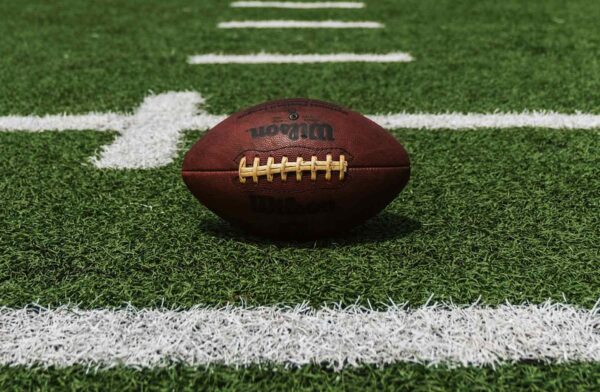Are you ready for some football? Whether you’re a die-hard fan or just a casual spectator, there’s always something new to learn about America’s favorite sport. It just so happens that one of the best ways to enhance your understanding of football is by learning the game’s unique terminology.
View the latest football odds at Bovada!
Football has a language all of its own, filled with words and phrases that may leave newcomers scratching their heads. In this article, we’ll do a deep dive into the glossary of football terms and definitions, covering everything from the basics like “field goal” and “kickoff” to the more complex concepts like “blitz” and “spread offense.”
So buckle up and get ready to explore the wild and wonderful world of football terminology. By the time you finish reading this article, you’ll be able to hold your own in any football conversation and impress your friends with your newfound knowledge!
Football Terms Explained
Touchdown – A scoring play worth six points, achieved when a team crosses the opponent’s goal line with the ball in their possession. To score a touchdown, a player must carry the football across the goal line, catch a pass in the end zone, or recover a loose ball in the end zone.
Field goal – A scoring play worth three points, achieved when a team kicks the football through the opponent’s goalposts. Field goals are typically attempted on fourth down when a team is too far from the end zone to attempt a touchdown, but close enough to try a kick.
Extra point – An automatic scoring opportunity following a touchdown, also known as a point-after-touchdown (PAT). The kicker must kick the football over the crossbar and between the goalposts to score an additional point.
Two-point conversion – A scoring play in which a team attempts to score two points after a touchdown by either running or passing the ball into the end zone, instead of attempting an extra point kick.
End zone – The rectangular area at each end of the football field. The end zone is bordered by the goal line, sidelines, and end line, and it is where touchdowns are scored.
Quarterback – A quarterback is the offensive position responsible for receiving the snap from the center and leading the offense by making throws, handing off the ball to running backs, or running with the ball themselves.
Running back – Also known as a halfback or tailback, the primary role of the running back position is to carry the football on rushing plays. Running backs are also important in the passing game, where they may be called upon to catch passes or block.
Wide receiver – The primary role for this football position is to catch passes from the quarterback. Wide receivers typically line up on the outer edges of the offensive formation and are often the fastest and most agile players on the field.
Tight end – This offensive position features versatile players who can both block defenders and catch passes from the quarterback. They line up next to the offensive linemen and can be used to provide extra blocking support or run routes to catch passes.
Offensive line – The group of players who protect the quarterback and open up running lanes for the running backs. The offensive line typically consists of five players, including the center, two guards, and two tackles.
Defensive line – The group of defensive players who work together to stop the offense from advancing down the field. Their primary role is to disrupt the offensive line, put pressure on the quarterback, and stop running backs from gaining yardage.
Linebacker – A defensive position typically found behind the defensive linemen and in front of the defensive backs. Linebackers are responsible for reading the offense, communicating with their teammates, and making tackles.
Defensive back – This defensive position is responsible for defending against the pass and stopping the opposing team’s receivers. The defensive backfield typically consists of cornerbacks and safeties.
Interception – When a defensive player catches a pass intended for an offensive player, effectively gaining possession of the ball for their team.
Fumble – When the ball carrier loses possession of the football. Once the player has lost possession of the ball, either team can recover it. Fumbles can be costly for the team that loses possession, often resulting in a turnover.
Blitz – A defensive strategy where one or more players rush the quarterback in an attempt to disrupt the opposing team’s passing game. A blitz can involve any number of players, and the defensive coordinator can choose to blitz linebackers, defensive backs or even defensive linemen.
Sack – When a defensive player tackles the quarterback behind the line of scrimmage before he can throw a pass or hand the ball off, resulting in a loss of yardage.
Red zone – The area on the field between the opponent’s 20-yard line and the goal line. When an offense crosses the 20-yard line, they are said to be “in the red zone.” The name “red zone” comes from the fact that this area is often marked with red lines on the field.
Fair catch – A signal made by a player receiving a punt or a kickoff to indicate that they do not intend to advance the ball and instead want to secure possession of it without being tackled.
Onside kick – Unlike a regular kickoff, an onside kick is kicked with less force and aimed to bounce off the ground and into the hands of a player on the kicking team. If the kicking team recovers the football, they gain possession at that spot and have the opportunity to continue their drive.
Spread offense – An offensive formation in which the offense spreads out the field by lining up its players further apart from each other than they would be in a traditional offense. The spread offense typically utilizes multiple wide receivers to create more passing options for the quarterback.
West Coast offense – An offensive formation that is known for its short, quick passes and emphasis on timing and precision. The quarterback is typically in the shotgun formation and takes short drops, looking to quickly get the ball out to receivers on short routes.
Nickel defense – A defensive formation that features five defensive backs instead of the usual four. It is typically used by a defense when they expect the opposing offense to pass the ball, as the extra defensive back provides additional coverage against receivers.

